This article was co-authored by Jamie Corroon, ND, MPH and by wikiHow staff writer, Amy Bobinger. Dr. Jamie Corroon, ND, MPH is the founder and Medical Director of the Center for Medical Cannabis Education. Dr. Corroon is a licensed Naturopathic Doctor and clinical researcher. In addition to clinical practice, Dr. Corroon advises dietary supplement and cannabis companies regarding science, regulation, and product development. He is well published in the peer-review literature, with recent publications that investigate the clinical and public health implications of the broadening acceptance of cannabis in society. He earned a Masters in Public Health (MPH) in Epidemiology from San Diego State University. He also earned a Doctor of Naturopathic Medicine degree from Bastyr University, subsequently completed two years of residency at the Bastyr Center for Natural Health, and is a former adjunct professor at Bastyr University California.
There are 10 references cited in this article, which can be found at the bottom of the page.
This article has been viewed 12,910 times.
If you're struggling with pain and are looking to an alternative for traditional medicine, you might be interested in trying CBD oil for relief. CBD, or cannabidiol, is a component of marijuana, but CBD doesn't cause a high like THC does.[1] However, you may find that CBD oil makes your body feel relaxed, and some people experience pain relief when they take it. CBD oil comes in a variety of different forms, so talk to your doctor and try a few different products to find the delivery method and dosing that helps you the most.
Steps
Choosing Your Delivery Method
-
1Try capsules to ensure a consistent dose. CBD oil capsules are pre-measured, making them a convenient and discreet pain-relief option. As long as you choose a product that's been lab-tested to verify the concentration and purity, this is the most reliable way to get a consistent dose.[2]
-
2Use a tincture if you want to take CBD oil orally. CBD oil tinctures typically either come with a dropper or in a spray bottle. If you have a dropper, measure out 1-2 drops of the tincture and squeeze the drops under your tongue, then hold the drops in place for about 30 seconds before you swallow. If the tincture comes in a spray bottle, spritz the tincture one time on the inside of each of your cheeks.[4]
- You can find CBD oil tinctures online for purchase here.
- If the CBD oil works for you, you should start to feel some pain relief within about 15-30 minutes.
- You can also put tinctures in your drink if you don't care for the taste. However, it will likely take 30 minutes or more to take effect.
Advertisement -
3Apply a CBD balm directly to the area that hurts for targeted relief. CBD extracts are often mixed with a substance like beeswax or coconut oil to create a balm. You can then massage this balm into your skin wherever you're experiencing pain. You may feel instant relief, but you're more likely to notice a difference after 30 minutes or more.[5]
- Topical massages with CBD oil may be especially helpful at relieving neuropathic pain and pain due to inflammation.
- If your CBD balm doesn't work, consider trying a different carrier. For instance, some people may find a balm made with coconut oil more effective than one made with beeswax, and vice versa.
- You can also try a higher concentration of CBD if your balm doesn't work.
-
4Consume an edible made with CBD oil if you don't mind waiting for the effects. When ingested, CBD oil can take 2-4 hours to take effect. However, the effects tend to last longer than with other forms. Edibles come in many forms, including CBD-infused honey, drinks, brownies, cookies, and gummy candies.[6]
- You can find edible gummies online for purchase here.
- Edibles are especially helpful for widespread pain and soreness.
- CBD may make the edible taste faintly of grass, although it might not be noticeable in edibles with stronger flavors like chocolate.[7]
- It can be very difficult to maintain a consistent dose with edibles. The amount and concentration of the CBD oil can vary between products, or even between batches of the same product. In addition, the way your body metabolizes the edible can be influenced by things like the time of day when you take the dose, as well as any other food you've eaten that day.
-
5Opt for a vape for quick delivery, but be aware of the risks. CBD oil is often sold in cartridges designed to fit on vape pens. The vape pen heats the CBD oil until it comes to a boil, and you inhale the vapor that's produced. You'll feel the effects almost instantly, but the long-term effects of vaping are still being studied.[8]
- Because vapes use CBD oil in high concentrations, it's easy to accidentally take too high of a dose. High doses of CBD oil might lead to fatigue, nausea, diarrhea, and irritability.[9]
Warning: Vaping may lead to lung and respiratory issues, shortness of breath, and chest pain.[10]
-
6Choose a commercial CBD oil with third-party lab testing. No matter what type of CBD oil you decide to try, it's important to ensure that the label accurately lists the product's concentration, active ingredients, extraction method, and purity. The best way to do this is to choose a product that has been tested by an independent laboratory. Typically, the results of these tests will be posted on the website of the company that made the CBD oil.
- If a product does not list this information, consider choosing a different brand.
- You can find full-spectrum CBD oil options for commercial use easily online. Popular brands include: Just CBD, Green Roads, CBDfx and CBDistillery.
- If you're looking to alleviate pain and sleep better, you can also try a CBD sleep oil.
- To ensure you don't choose a product that contains harmful chemicals, opt for a CBD oil that was extracted with CO2.
Warning: Some CBD products have been found to contain trace amounts of THC. If you select a product that hasn't been tested and it contains THC in a concentration higher than 0.3%, you could test positive for marijuana on a drug test, and you could potentially be arrested for possession of an illegal substance, depending on where you live.
Finding the Right Dose
-
1Talk to a doctor about your dosage and potential medication interactions. Before you start taking any new supplement, including CBD oil, it's important to talk to your doctor. They can help you determine what dosage you should start at, and they can also advise you whether the CBD oil might interfere with any medications you're currently taking, such as blood thinners.[11]
- CBD oil can raise the level of some medications in your blood, such as blood pressure medicine, so it's especially important to talk to your doctor if you're currently taking any prescriptions.[12]
-
2Read the label for dosing instructions on a specific product. In order to make sure you know exactly how much CBD you're taking, find the per-dose CBD amount for the product you're planning to use. If that information isn't listed on the product label explicitly, you can determine the amount of CBD in each dose by dividing the total CBD in the product by the number of doses the product contains.[13]
- For instance, if you have a 30 milliliters (1 fl oz) bottle of a CBD oil that contains a total of 600 mg of CBD, then there would be 20 mg of CBD in each 1 ml dose.
-
3Start by taking a dose of 10-15 mg of low-concentration CBD oil. To avoid getting a higher dose of CBD than you're comfortable with, start with a small dose—no more than 10-15 mg, at first. That will allow you to get a feel for whether the CBD oil will affect your pain level, but your risk of unpleasant side effects will be lower.[14]
- Although this dose is smaller than most people will require, it's still best to stick to a lower-concentration CBD oil, such as a 250 mg concentration. If you need to, you can move up to a higher concentration later on.
- Taking too high of a dose may cause drowsiness, lethargy, upset stomach, nausea, diarrhea. [15]
-
4Increase the dose gradually if a smaller dose doesn't work. If you don't feel any pain relief from the CBD oil, or if you feel some effects but they aren't strong enough, you may want to try a higher dose next time. Try increasing your dose by about 5 mg until you get up to 30 mg.[16]
- If that still isn't strong enough, try a higher concentration of CBD oil, such as 500 mg or 1000 mg concentrate. However, be sure to drop the dosing back down when you're trying CBD oil that's a higher potency than what you're used to.
-
5Do not increase the dose once you find what works for you. Unlike many other medications, you will not develop a tolerance to CBD oil. Once you find a dose that works for you, continue to take that same amount, and do not increase the dose.[17]
- To avoid unpleasant side effects, always take the lowest possible dose that works for you.
-
6Stop taking CBD oil if the side effects bother you. Some people may experience dry mouth, drowsiness, fatigue, diarrhea, anxiety, irritability, or a reduced appetite when they take CBD oil. If you experience these side effects and they bother you, discontinue using CBD oil, or try a lower dose.[18]
- Typically, these side effects are relatively mild, and they'll usually go away on their own after a few hours.
Expert Q&A
-
QuestionDoes CBD oil actually help relieve pain?
 Aimée Shunney, NDDr. Aimée Gould Shunney is a Licensed Naturopathic Doctor at Santa Cruz Integrative Medicine in Santa Cruz, California where she specializes in women's health and hormone balancing. She also consults with various companies in the natural products industry including CV Sciences, makers of PlusCBD Oil. Dr. Aimée educates consumers, retailers, and healthcare providers about CBD oil through written articles, webinars, podcasts, and conferences nationwide. Her work has been featured at the American Academy for Anti-Aging Medicine, the American Association of Naturopathic Physicians Conference, and on Fox News. She earned her ND from the National College of Naturopathic Medicine in 2001.
Aimée Shunney, NDDr. Aimée Gould Shunney is a Licensed Naturopathic Doctor at Santa Cruz Integrative Medicine in Santa Cruz, California where she specializes in women's health and hormone balancing. She also consults with various companies in the natural products industry including CV Sciences, makers of PlusCBD Oil. Dr. Aimée educates consumers, retailers, and healthcare providers about CBD oil through written articles, webinars, podcasts, and conferences nationwide. Her work has been featured at the American Academy for Anti-Aging Medicine, the American Association of Naturopathic Physicians Conference, and on Fox News. She earned her ND from the National College of Naturopathic Medicine in 2001.
Licensed Naturopathic Doctor It can, yes. CBD interacts with your endoccannabinoid system. This is directly tied to the way your body responds to pain and inflammation.
It can, yes. CBD interacts with your endoccannabinoid system. This is directly tied to the way your body responds to pain and inflammation. -
QuestionCan I rub CBD oil on my skin for pain?
 Michael Lewis, MD, MPH, MBA, FACPM, FACNMichael D. Lewis, MD, MPH, MBA, FACPM, FACN, is an expert on nutritional interventions for brain health, particularly the prevention and rehabilitation of brain injury. In 2012 upon retiring as a Colonel after 31 years in the U.S. Army, he founded the nonprofit Brain Health Education and Research Institute. He is in private practice in Potomac, Maryland, and is the author of "When Brains Collide: What every athlete and parent should know about the prevention and treatment of concussions and head injuries." He is a graduate of the U.S. Military Academy at West Point and Tulane University School of Medicine. He completed post-graduate training at Walter Reed Army Medical Center, Johns Hopkins University, and Walter Reed Army Institute of Research. Dr. Lewis is board certified and a Fellow of the American College of Preventive Medicine and American College of Nutrition.
Michael Lewis, MD, MPH, MBA, FACPM, FACNMichael D. Lewis, MD, MPH, MBA, FACPM, FACN, is an expert on nutritional interventions for brain health, particularly the prevention and rehabilitation of brain injury. In 2012 upon retiring as a Colonel after 31 years in the U.S. Army, he founded the nonprofit Brain Health Education and Research Institute. He is in private practice in Potomac, Maryland, and is the author of "When Brains Collide: What every athlete and parent should know about the prevention and treatment of concussions and head injuries." He is a graduate of the U.S. Military Academy at West Point and Tulane University School of Medicine. He completed post-graduate training at Walter Reed Army Medical Center, Johns Hopkins University, and Walter Reed Army Institute of Research. Dr. Lewis is board certified and a Fellow of the American College of Preventive Medicine and American College of Nutrition.
Board Certified Brain Health Physician Yes, CBD balms are useful for targeted relief. For instance, if you have elbow pain, you could put a topical product just on your elbow.
Yes, CBD balms are useful for targeted relief. For instance, if you have elbow pain, you could put a topical product just on your elbow. -
QuestionWhat should be on a medical marijuana label?
 Jamie Corroon, ND, MPHDr. Jamie Corroon, ND, MPH is the founder and Medical Director of the Center for Medical Cannabis Education. Dr. Corroon is a licensed Naturopathic Doctor and clinical researcher. In addition to clinical practice, Dr. Corroon advises dietary supplement and cannabis companies regarding science, regulation, and product development. He is well published in the peer-review literature, with recent publications that investigate the clinical and public health implications of the broadening acceptance of cannabis in society. He earned a Masters in Public Health (MPH) in Epidemiology from San Diego State University. He also earned a Doctor of Naturopathic Medicine degree from Bastyr University, subsequently completed two years of residency at the Bastyr Center for Natural Health, and is a former adjunct professor at Bastyr University California.
Jamie Corroon, ND, MPHDr. Jamie Corroon, ND, MPH is the founder and Medical Director of the Center for Medical Cannabis Education. Dr. Corroon is a licensed Naturopathic Doctor and clinical researcher. In addition to clinical practice, Dr. Corroon advises dietary supplement and cannabis companies regarding science, regulation, and product development. He is well published in the peer-review literature, with recent publications that investigate the clinical and public health implications of the broadening acceptance of cannabis in society. He earned a Masters in Public Health (MPH) in Epidemiology from San Diego State University. He also earned a Doctor of Naturopathic Medicine degree from Bastyr University, subsequently completed two years of residency at the Bastyr Center for Natural Health, and is a former adjunct professor at Bastyr University California.
Medical Director of the Center for Medical Cannabis Education Medical marijuana product labels should clearly state the amount, in milligrams, of THC, CBD, and any other active ingredient in the product. Inactive ingredients should also be included if they could cause an allergic reaction, like nuts, wheat, and soy. However, the label shouldn't make any health-related statements, such as "promotes sleep" or "reduces pain," as the USFDA has not sanctioned these claims.
Medical marijuana product labels should clearly state the amount, in milligrams, of THC, CBD, and any other active ingredient in the product. Inactive ingredients should also be included if they could cause an allergic reaction, like nuts, wheat, and soy. However, the label shouldn't make any health-related statements, such as "promotes sleep" or "reduces pain," as the USFDA has not sanctioned these claims.
Warnings
- Since it doesn't cause a high and is typically extracted from hemp, CBD oil is legal in most areas. However, some places prohibit the sale or use of CBD oil, so check your local laws.⧼thumbs_response⧽
References
- ↑ https://www.health.harvard.edu/blog/cannabidiol-cbd-what-we-know-and-what-we-dont-2018082414476
- ↑ https://www.ncbi.nlm.nih.gov/pmc/articles/PMC7558665/
- ↑ https://www.canada.ca/en/health-canada/services/drugs-medication/cannabis/resources/what-you-need-to-know-if-you-choose-to-consume-cannabis.html
- ↑ https://www.health.harvard.edu/newsletter_article/cbd-products-are-everywhere-but-do-they-work
- ↑ https://www.health.harvard.edu/blog/cannabidiol-cbd-what-we-know-and-what-we-dont-2018082414476
- ↑ https://www.cbdcentral.com/how-to-take-cbd-oil/
- ↑ https://www.consumerreports.org/cbd/how-to-use-cbd-inhale-spray-apply-eat/
- ↑ https://www.cbdcentral.com/how-to-take-cbd-oil/
- ↑ https://www.consumerreports.org/cbd/how-to-use-cbd-inhale-spray-apply-eat/
- ↑ https://www.consumerreports.org/cbd/how-to-use-cbd-inhale-spray-apply-eat/
- ↑ https://familydoctor.org/cbd-oil/
- ↑ https://www.health.harvard.edu/blog/cannabidiol-cbd-what-we-know-and-what-we-dont-2018082414476
- ↑ https://www.consumerreports.org/cbd/how-to-use-cbd-inhale-spray-apply-eat/
- ↑ https://thewell.northwell.edu/well-informed/should-you-try-cbd-oil
- ↑ https://www.ncbi.nlm.nih.gov/pmc/articles/PMC7052834/
- ↑ https://thewell.northwell.edu/well-informed/should-you-try-cbd-oil
- ↑ https://www.ncbi.nlm.nih.gov/pmc/articles/PMC5569602/
- ↑ https://www.health.harvard.edu/blog/cannabidiol-cbd-what-we-know-and-what-we-dont-2018082414476
About This Article
CBD is a compound sourced from hemp. CBD affects a system in your body called the endocannabinoid system. Receptors from this system are found in immune tissue, which is responsible for controlling inflammation in the body, and in the hypothalamus and amygdala - brain structures involved in managing the stress response. Because of this, CBD oil may be able to help alleviate certain kinds of pain, like muscle pain, stomach pain, and pain caused by inflammation. If you're interested in taking CBD oil for pain, you can take CBD capsules, eat CBD edibles, or place drops of CBD oil under your tongue. Start with 5 to 10 milligrams per day, and gradually increase how much you're taking until you find a dose that helps with your pain. You can also apply CBD-infused lotions and balms directly to your skin if you have tense or sore muscles. Always purchase your CBD products from a reputable seller since CBD oil isn't regulated. Talk to your doctor before taking CBD oil for pain to make sure it's safe. CBD oil can interact with certain medications, so it may not be right for you if you're currently taking other medications for your pain.
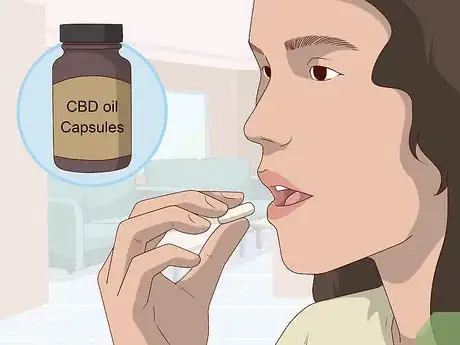
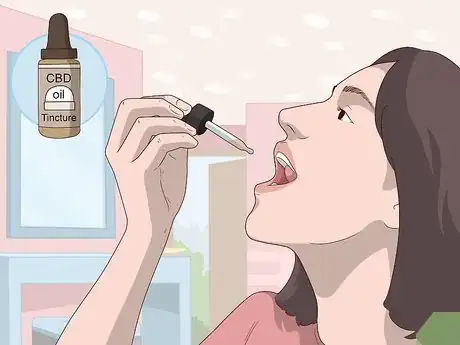
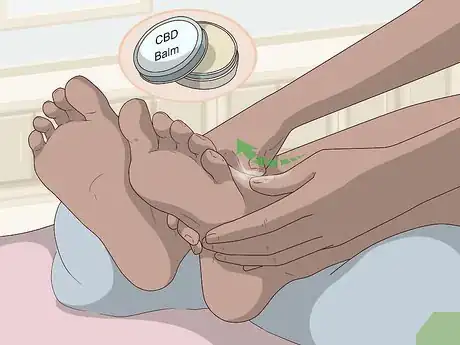
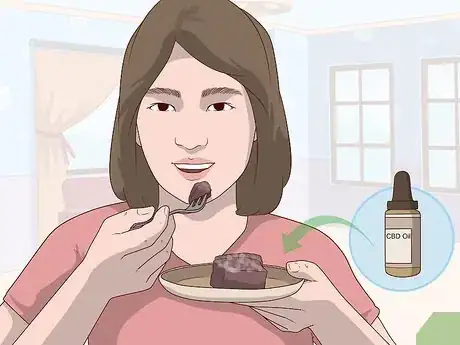
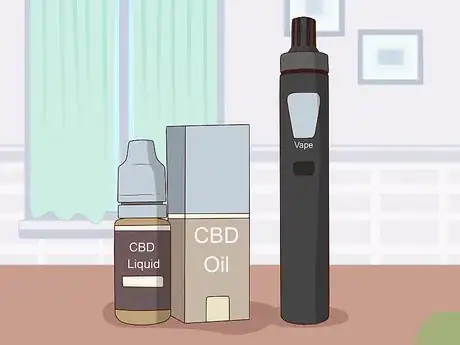
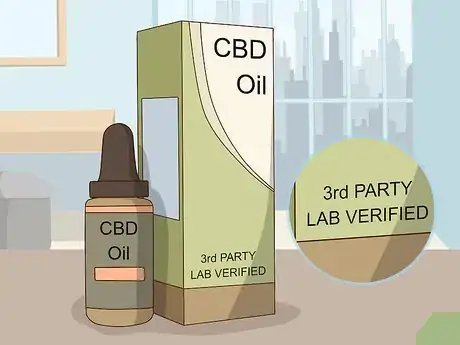
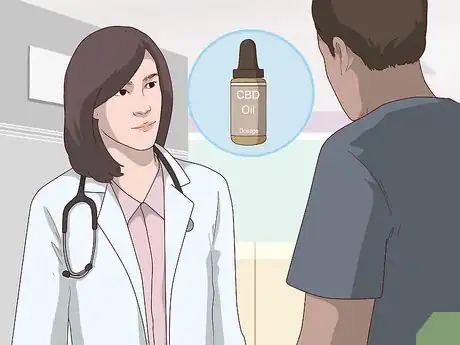

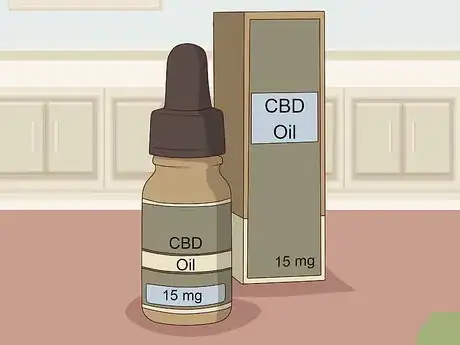

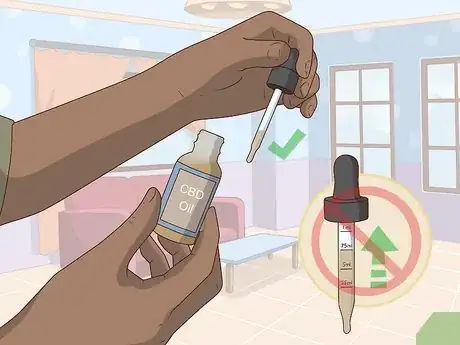
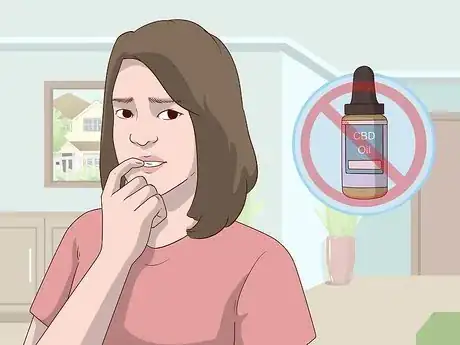



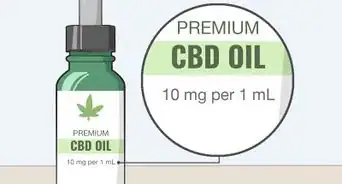
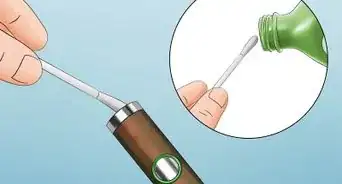
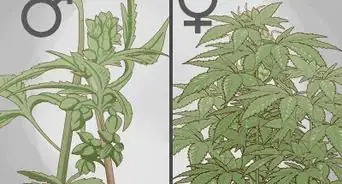






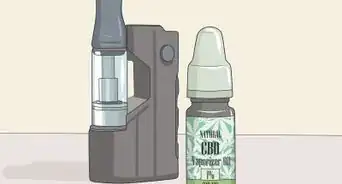
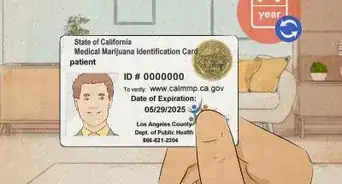










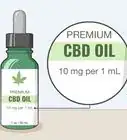



































Medical Disclaimer
The content of this article is not intended to be a substitute for professional medical advice, examination, diagnosis, or treatment. You should always contact your doctor or other qualified healthcare professional before starting, changing, or stopping any kind of health treatment.
Read More...